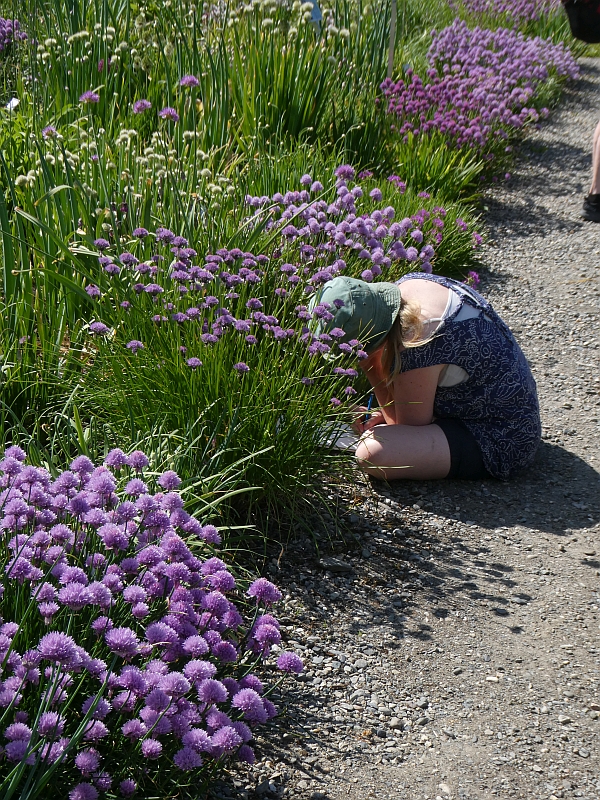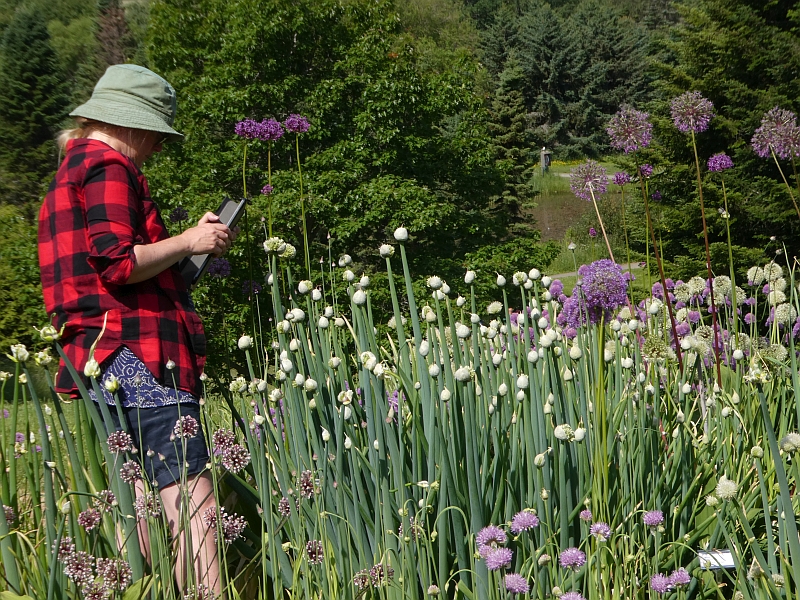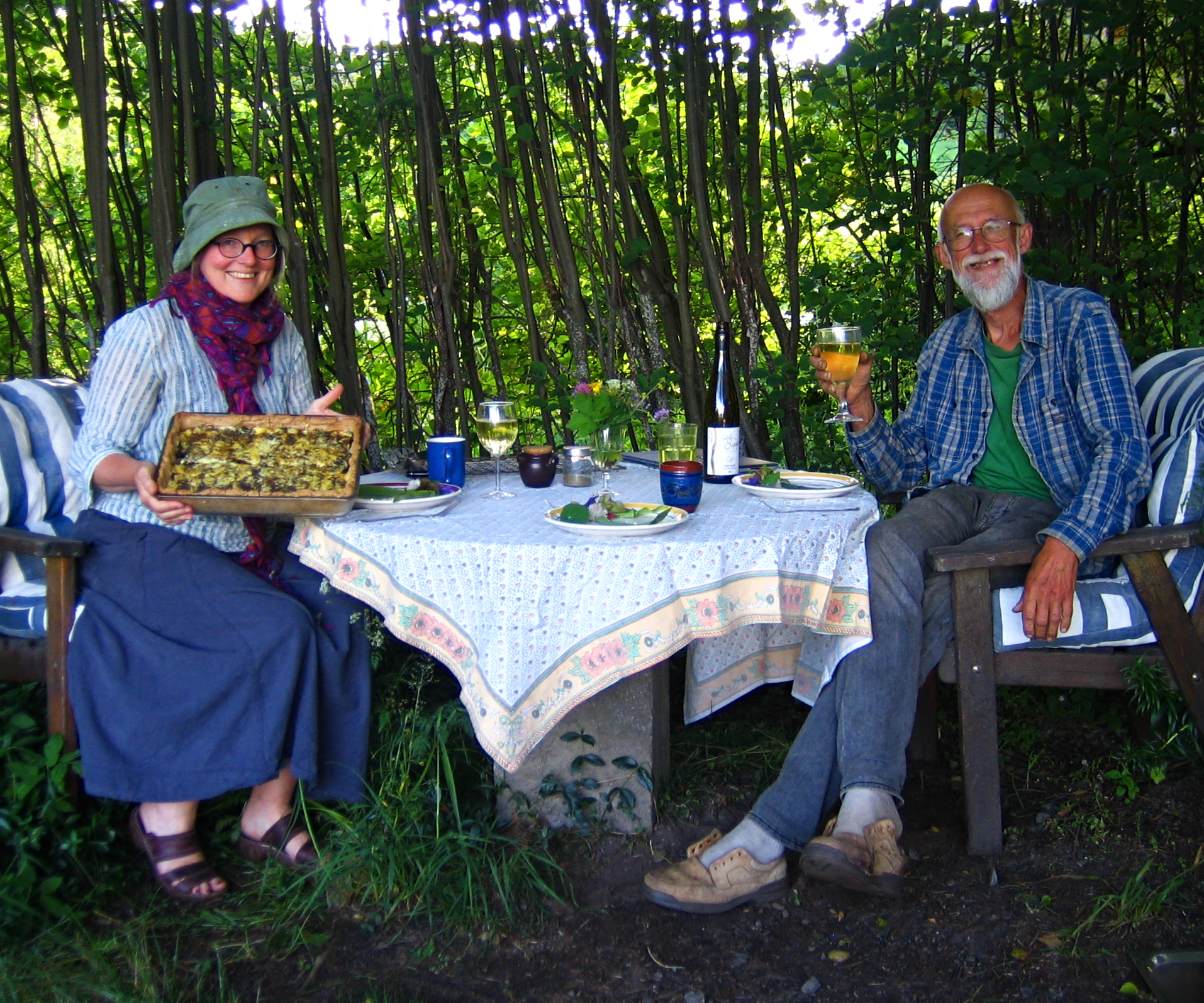I don’t often post here about my other two gardens, the community garden at Væres Venner and the Onion Garden Chicago at the Ringve Botanical Garden in Trondheim.
The onion garden is nicely maturing and will be officially opened this summer on 26th August, 6 years since I started work creating a garden to house a national collection of old Norwegian perennial vegetable onions collected throughout the country, some 100 botanical species from around the world and many cultivars too!
Here’s a couple of videos showing the garden on 25th June 2023 close to peak flowering, although there will be flowering Alliums all the way from May to the first heavy frosts in October / November!
Tasty, beautiful and a great place to study pollinators! Can you smell it?
There are now over 500 pictures from the garden in this large Facebook album
Category Archives: Perennial vegetables
Hablitzia, Laportea and Nettle Gnocchi
What to do with the very last Sarpo Mira potatoes from the cellar? Last night’s dinner was Gnocchi made with Hablitzia leaf, Laportea canadensis (Canadian wood nettle tops) and stinging nettle tops. I must admit that our first attempt turned into a gnocchi soup, so we had a starter with exactly the same ingredients as the main course :) The second attempt was excellent though!
Hablitzia tamnoides leaves:
Canadian wood nettle (Laportea canadensis); the tops of the stems can also be used: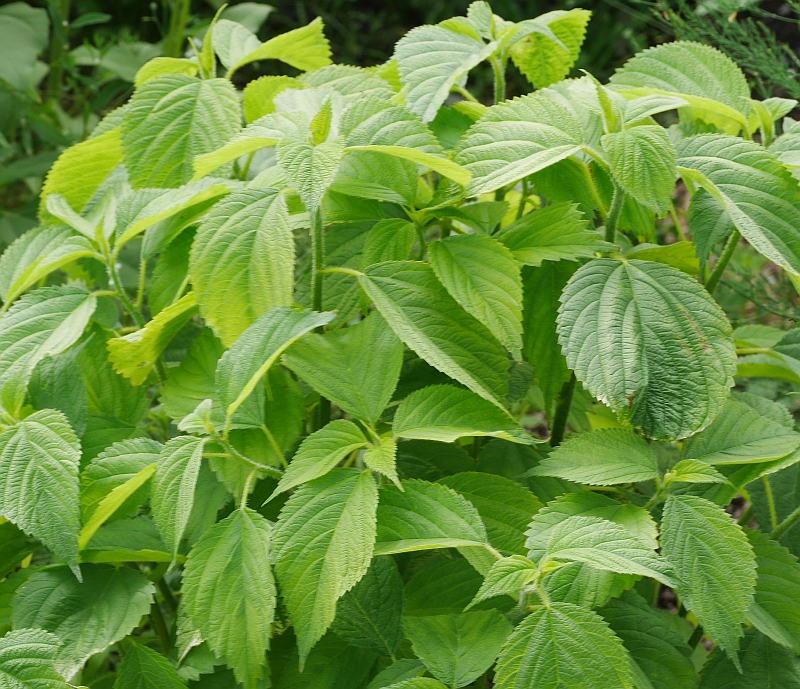 Making the gnocchi (potato used instead of grain for pasta):
Making the gnocchi (potato used instead of grain for pasta):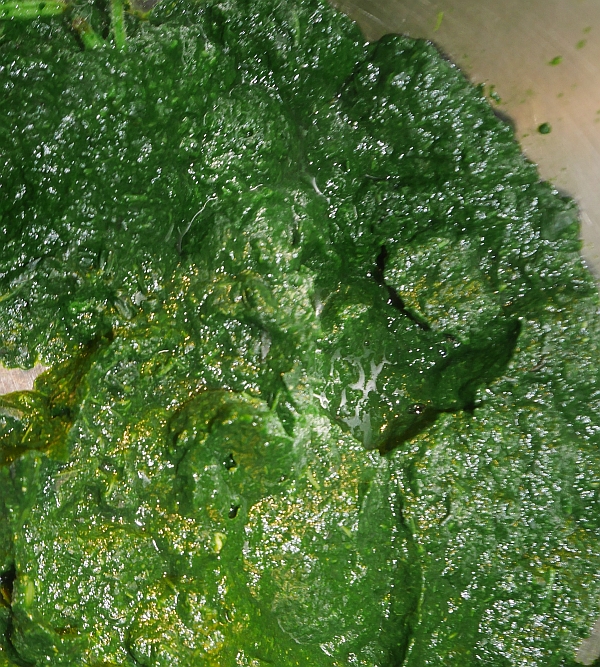
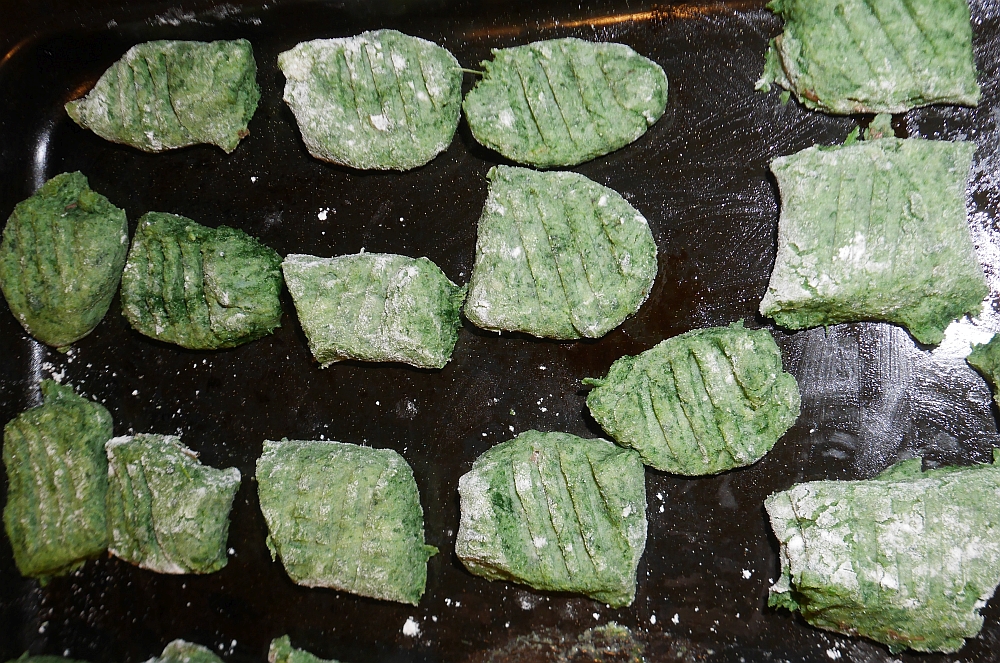

Rampions for the hungry gap
The rampions (vadderot in Norwegian, Phyteuma in Latin) has been naturalizing in my garden but so far keeping to the cultivated beds. I needed to dig up a few this week as it was outcompeting some other plants I wanted to keep. I cooked the roots and they were delicious and almost fibre-free and used in a salad. Along with other plants in the Campanulaceae this is a very useful root crop for the root hungry gap! And just look at the bumble bees swarming over the flower tops, always the most popular plant for the white-tailed bumblebees (jordhumler), one of the most useful plants to grow, both tasty (I use also spring leaves and flower buds), nice to look at and a pollinator friendly, ticking all 3 boxes required to categorise it as an edi-ento-mental!
Thr film shows bumble bees on a white-flowered patch of Phyteuma spicatum (spiked rampion).
See also these posts about Phyteuma:
https://www.edimentals.com/blog/?p=21018 (an article I wrote on the ethnobotany of Phyteuma “The perennial rampions: Shade tolerant edientomentals”)
https://www.edimentals.com/blog/?p=18624 (Rampions for dinner)
https://www.edimentals.com/blog/?p=11910 (Rapunsel)
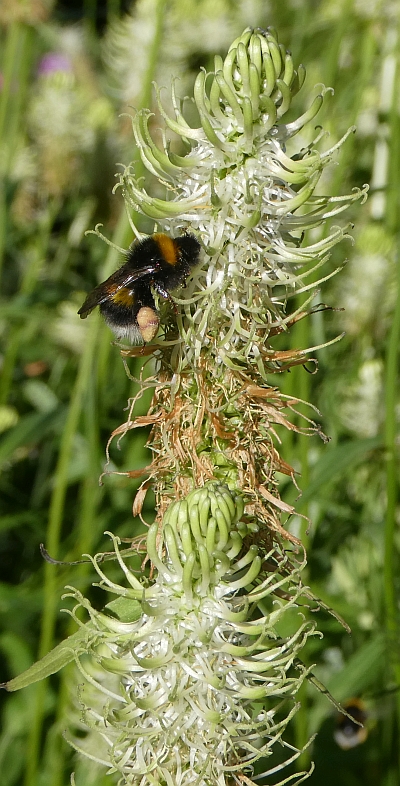


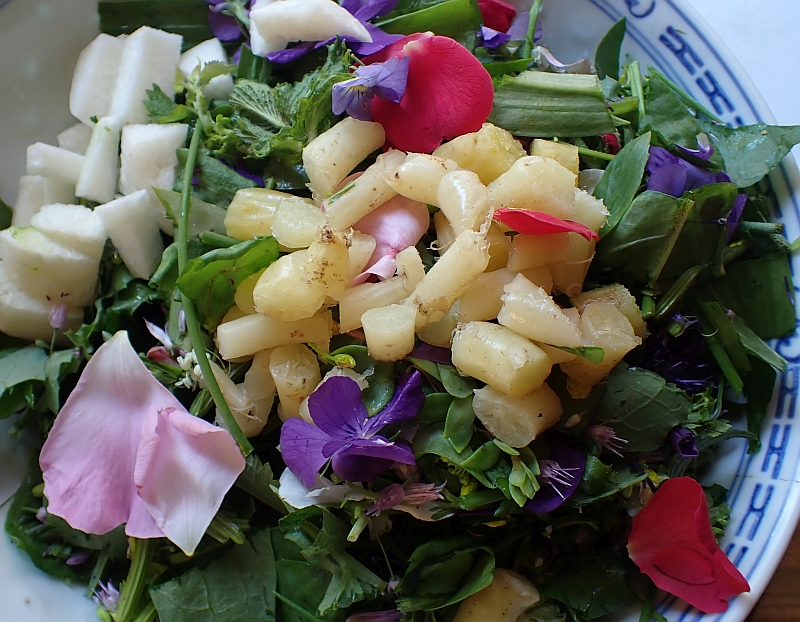
Artist in Residence Elin Eriksen
Garden foraged perennial veggies: 28th June 2023
Tonight’s perennial vegetables from the garden, used in a stir-fry:
Top right and clockwise:
Sochan / Cherokee greens tops (Rudbeckia laciniata); Norsk: Kyss-meg-
over-gjerde (picture at the bottom)
Sorrel (Rumex acetosa) “Skomvær”; Norsk: engsyre (picture at the bottom)
Garlic shoots (Allium sativum) from a clump grown as a perennial; Norsk: hvitløk
Perennial chicory tops (Cichorium intybus)
Urtica platyphylla (a Japanese nettle species; later than Urtica dioica)
Cabbage thistle (Cirsium oleraceum); Norsk: kåltistel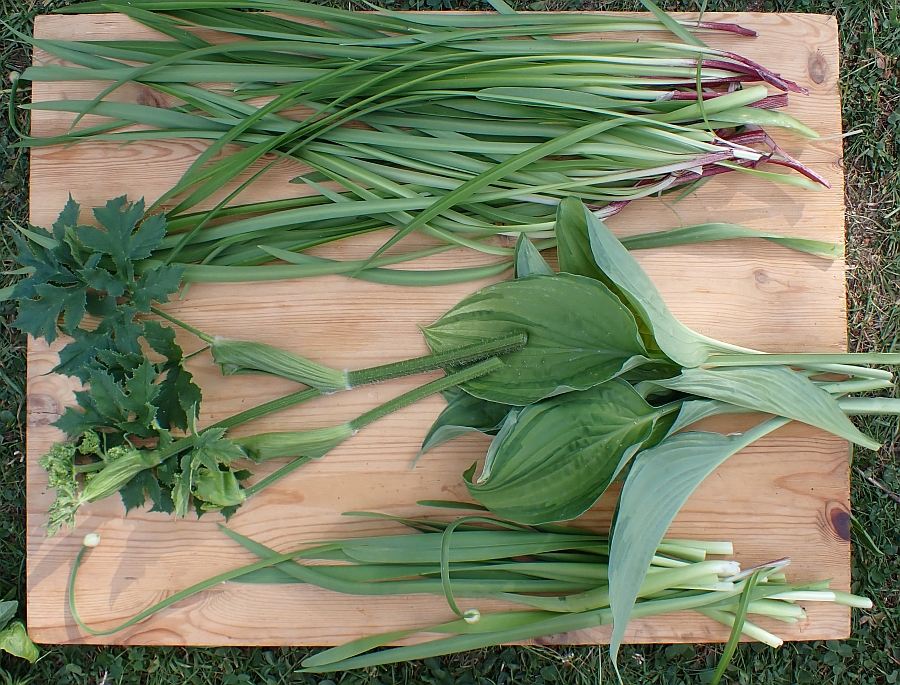 From top and down
From top and down
Sherpa onion (Allium wallichii); perfect time for harvesting; Norsk: Sherpaløk
Hogweed tops (Heracleum); Norsk: bjørnekjeks
Hosta fortunei var. albopicta f. aurea
Allium nutans; Norsk: Sibirsk nikkeløk Sochan tops are excellent
Sochan tops are excellent A sorrel I collected at Skomvær, an island outermost in the Lofoten Islands; it is floriferous and has a compact growth form!
A sorrel I collected at Skomvær, an island outermost in the Lofoten Islands; it is floriferous and has a compact growth form!
This year’s udo picture!
Presenting this year’s udo (Aralia cordata) almost fully extended
Thanks to Elin Eriksen for the picture (she has been Artist in Residence at the Edible Garden the last few days with focus on perennial vegetables)!
Turkish brockets
This week, the tastiest part of turkish rocket / russekål (Bunias orientalis), the broccolis (affectionately known as brockets here!), were ready to harvest! Although considered an unwanted invasive nowadays in Norway, my 30 year old plant has never produced a seed. However, the plant died (I thought) a couple of years ago only for a number of new plants to appear from the roots some distance away. I hadn’t realised it did this. I was also puzzled to read on the Norwegian invasive species database that it is biennial and spreads aggressively by seed (see https://artsdatabanken.no/Fab2018/N/602).
Anyway, it made a delicious lunch stir-fried with St. George’s mushroom (vårfagerhatt), some leftover cooked potatoes and mixed into scrambled egg with chili and garlic. Read more in my book Around the World in 80 plants.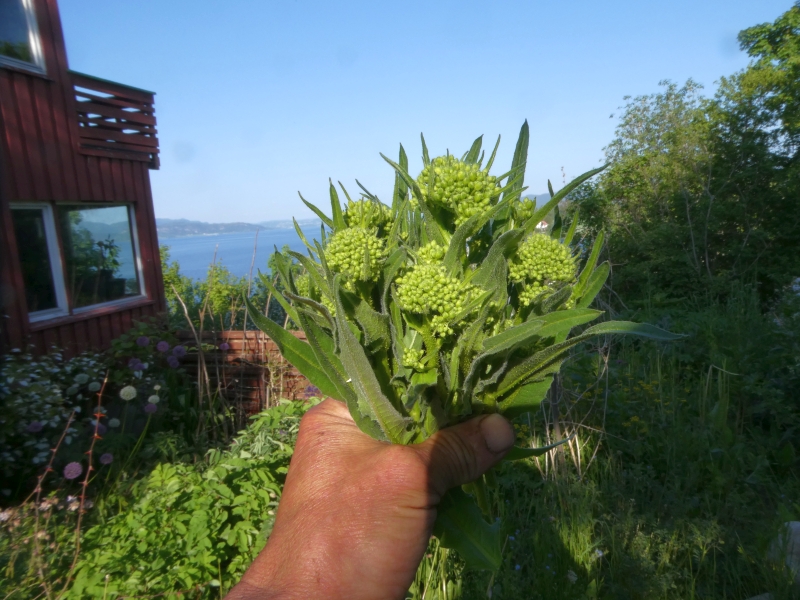
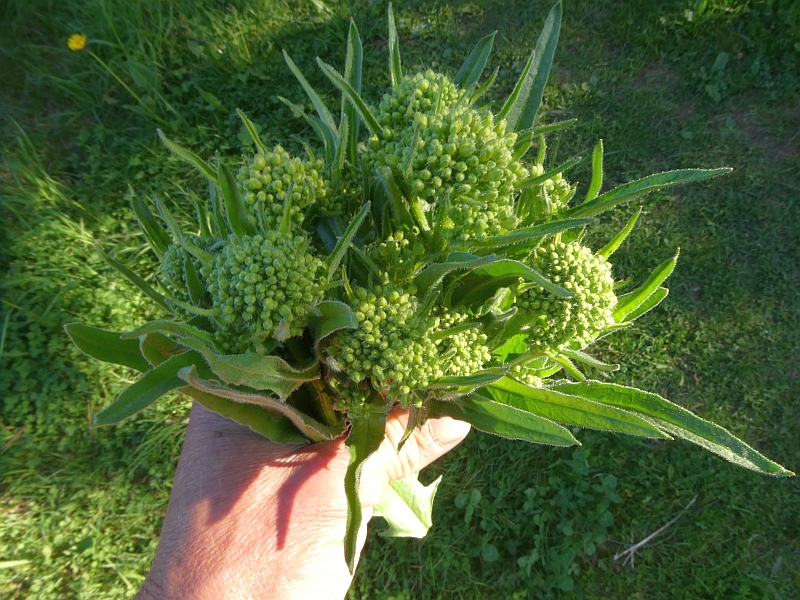
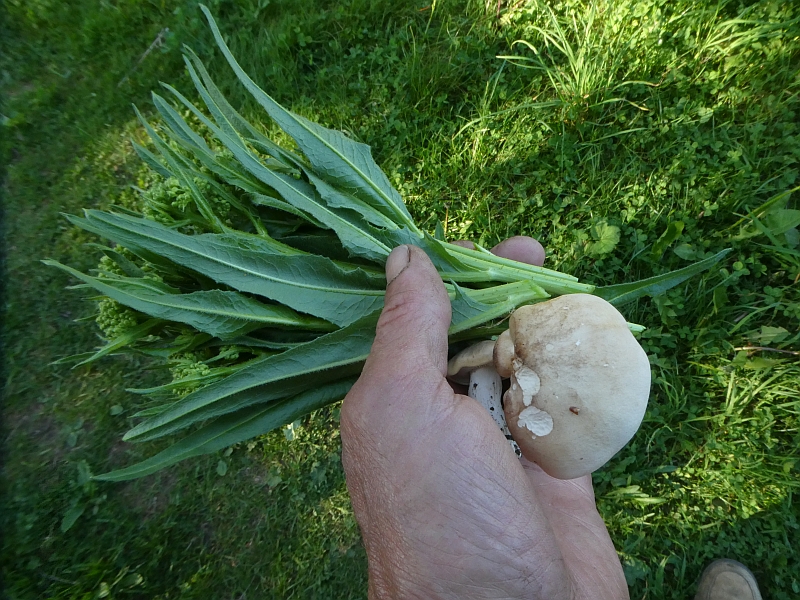

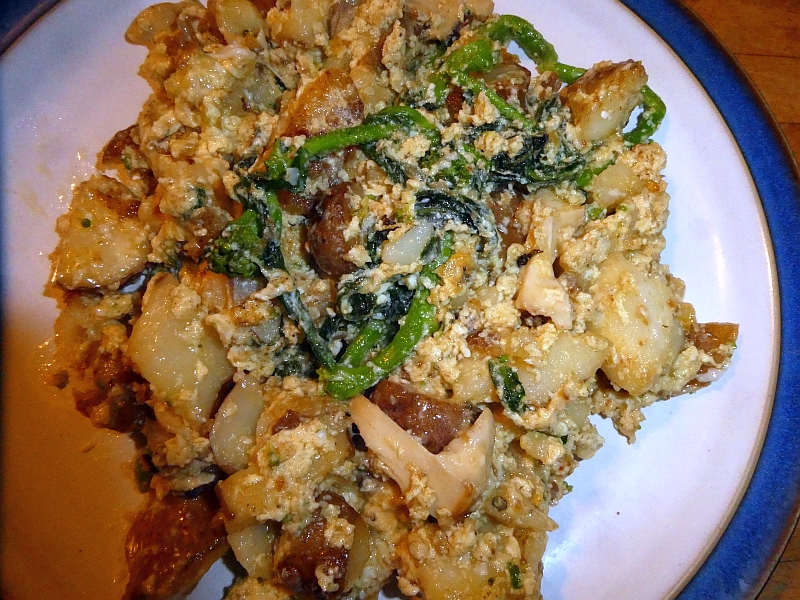
Mountain cultivation of Udo in Nagano
On 9th April 2016 I was staying with my new friend Tei Kobayashi in the mountains in a lovely village, Nogura, above Ueda in Nagano Prefecture. I was put in touch with Tei through a mutual friend in Norwegian Seed Savers (KVANN), Caroline Ho-Bich-Tuyen Dang, when I put out a call for an interpreter when visiting the farm with the underground udo forcing caverns in Tokyo: https://www.edimentals.com/blog/?p=8284 and https://www.edimentals.com/blog/?p=7499
Tei had kindly agreed to travel down to help out!
She took me to see udo (Aralia cordata) being grown on a small farm in her village with a villager who had knowledge of sansai. The new shoots were just appearing through a thick layer of rice husks. Here’s a video and some pictures of this beautiful place! Thanks again to you Tei for your hospitality without which this would never have been possible!
There will hopefully be more posts from the visit with Tei as soon as time allows!
Tei starts talking about another use of rice husks, in nukazuke, fermented vegetables in rice bran (nuka), see https://en.wikipedia.org/wiki/Nukazuke
(Thanks to Tei for the following clarification: I just wanted to comment on the Udo cultivation process. I just learned that it is not “nuka “ but “momigara” that the plants are grown in to keep them white. “Momigara is the outermost husk of the rice kernel. “Nuka” is the inner rice hull it is very finely ground into an almost powdery substance. Nuka is the outer covering of the rice that is removed to make it white…it is often polished after the hull is removed”.)

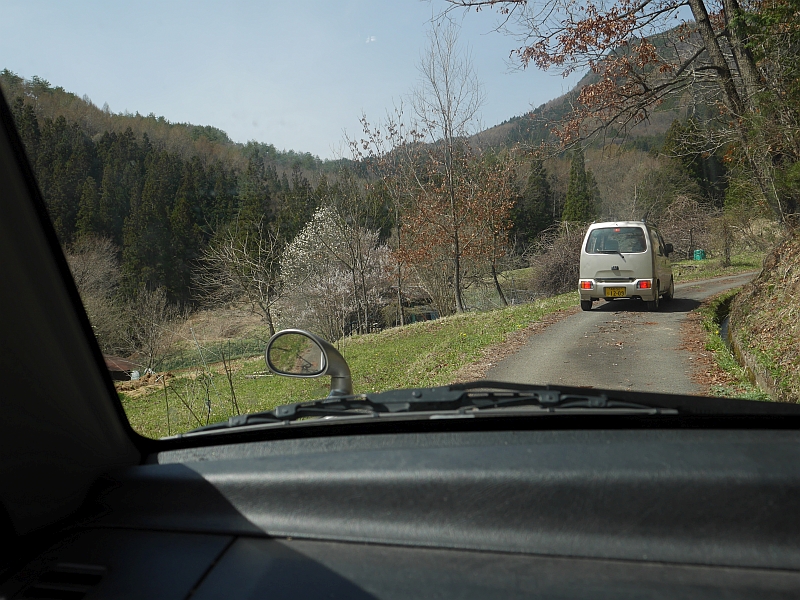
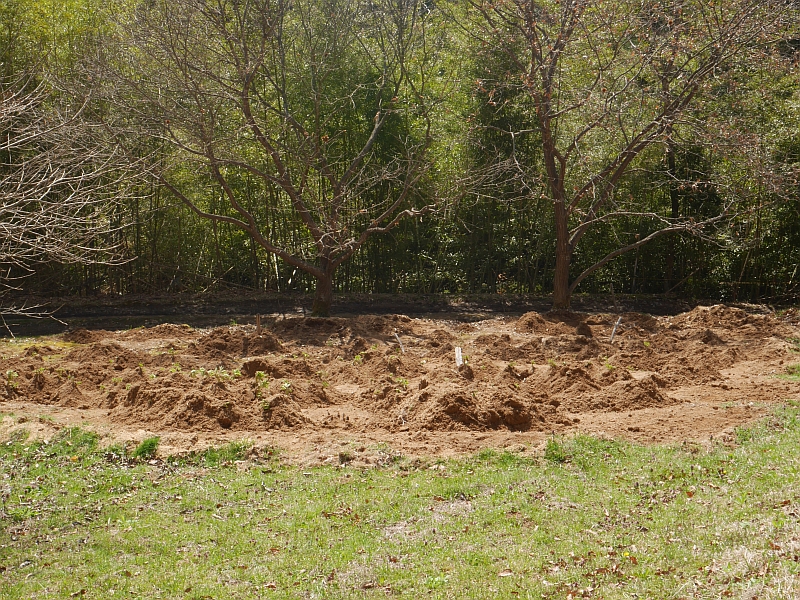

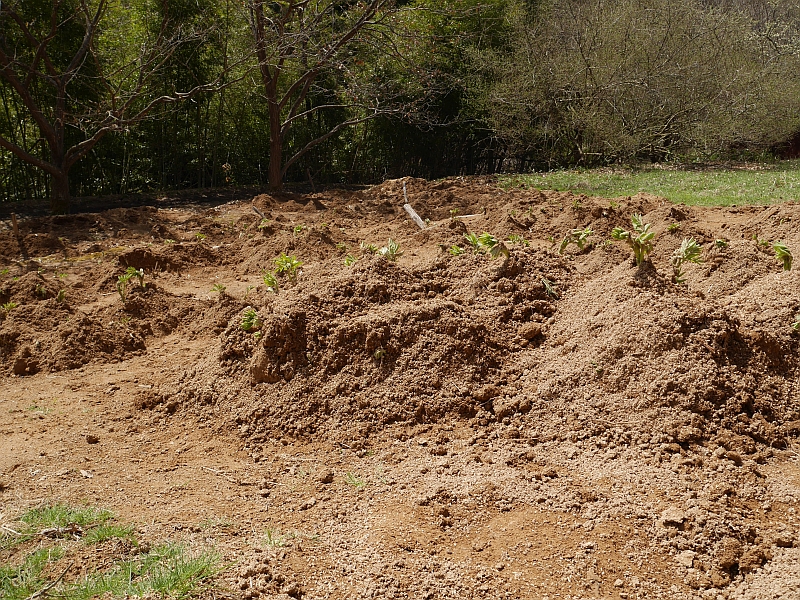






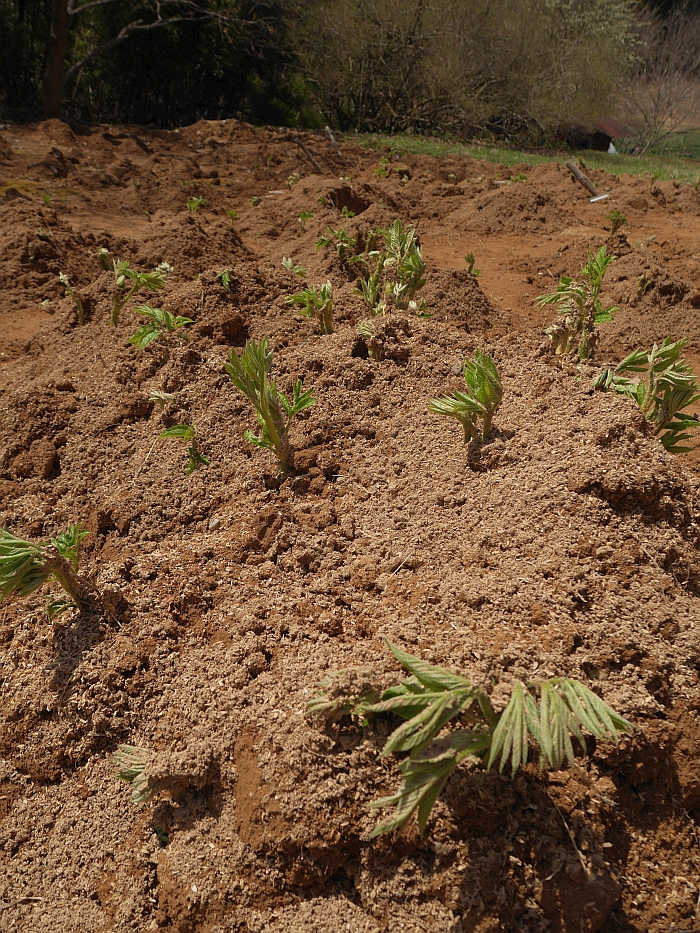


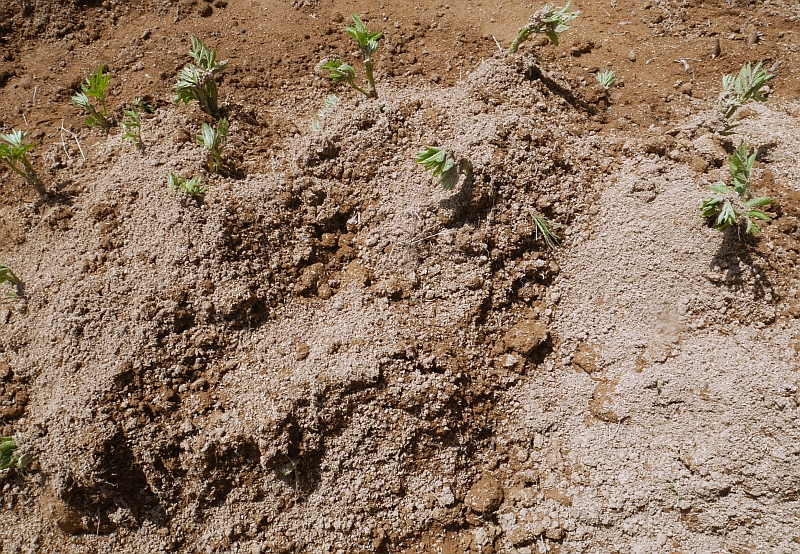 Showing us Chengiopanax sciadophylloides (koshiabura) which had yet to emerge:
Showing us Chengiopanax sciadophylloides (koshiabura) which had yet to emerge: 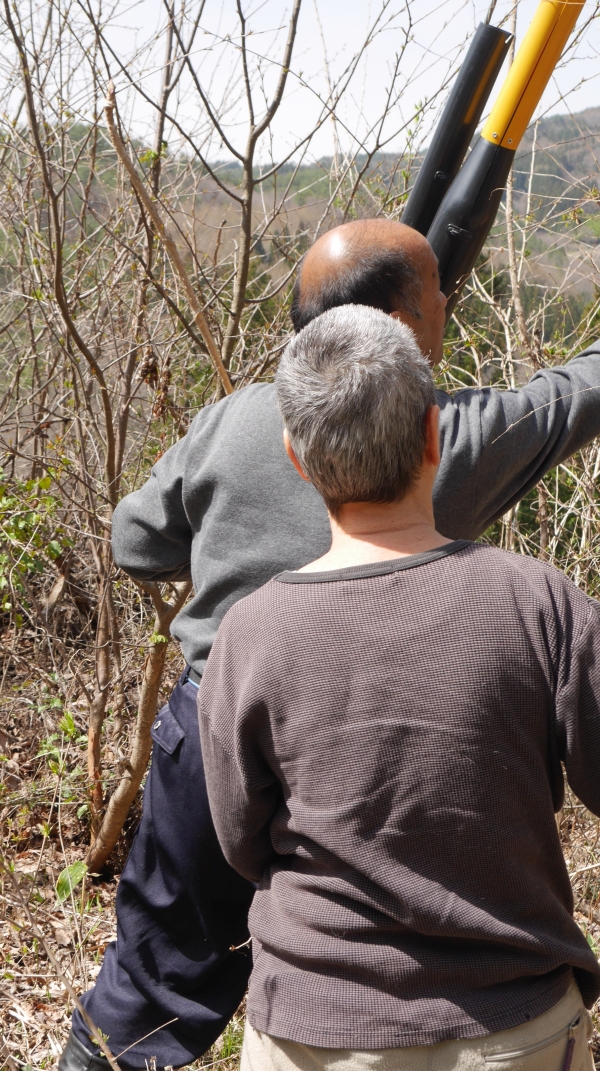

Fact-finding mission: promoting perennial vegetables
On Tuesday 23rd May I spent a great few hours together with Eva Johansson and Annevi Sjöberg from Sweden in my 3 gardens. They were on a fact-finding mission in connection with the project ”Främja fleråriga grönsaker i svensk matförsörjning” (Promoting perennial vegetables in the Swedish food supply).
The project Främja fleråriga grönsaker i svensk matförsörjning is financed with funds from the Swedish Agency for Agriculture (Jordbruksverket) within the framework of the Swedish food strategy (den svenska livsmedelsstrategin). The project runs until Dec 2023. The Skillebyholm Foundation manages the project.
Jen from Nottingham in the UK was visiting this week to help and learn, thanks to an RHS bursary! She joined us on the trip and can also be seen in the pictures below!
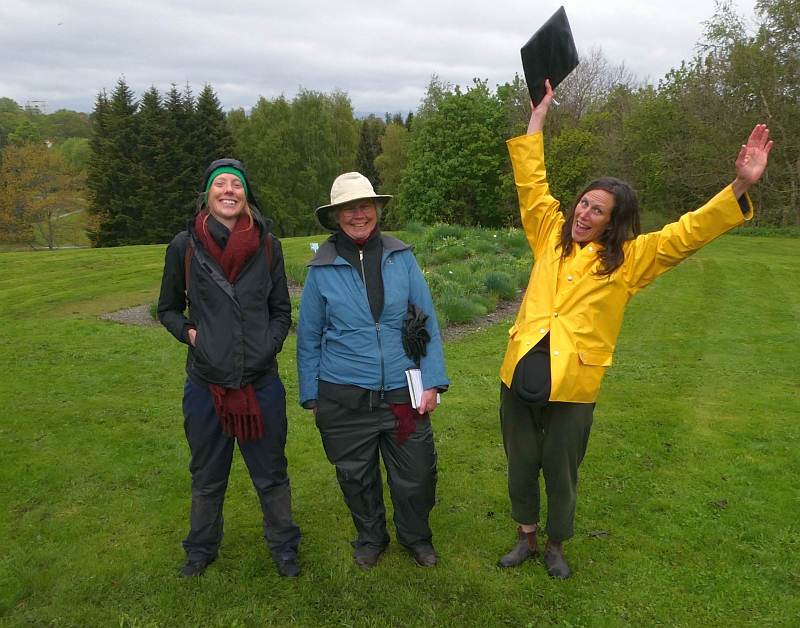


God Save the King’s Hostas!

My Highgrove Hosta slide:


